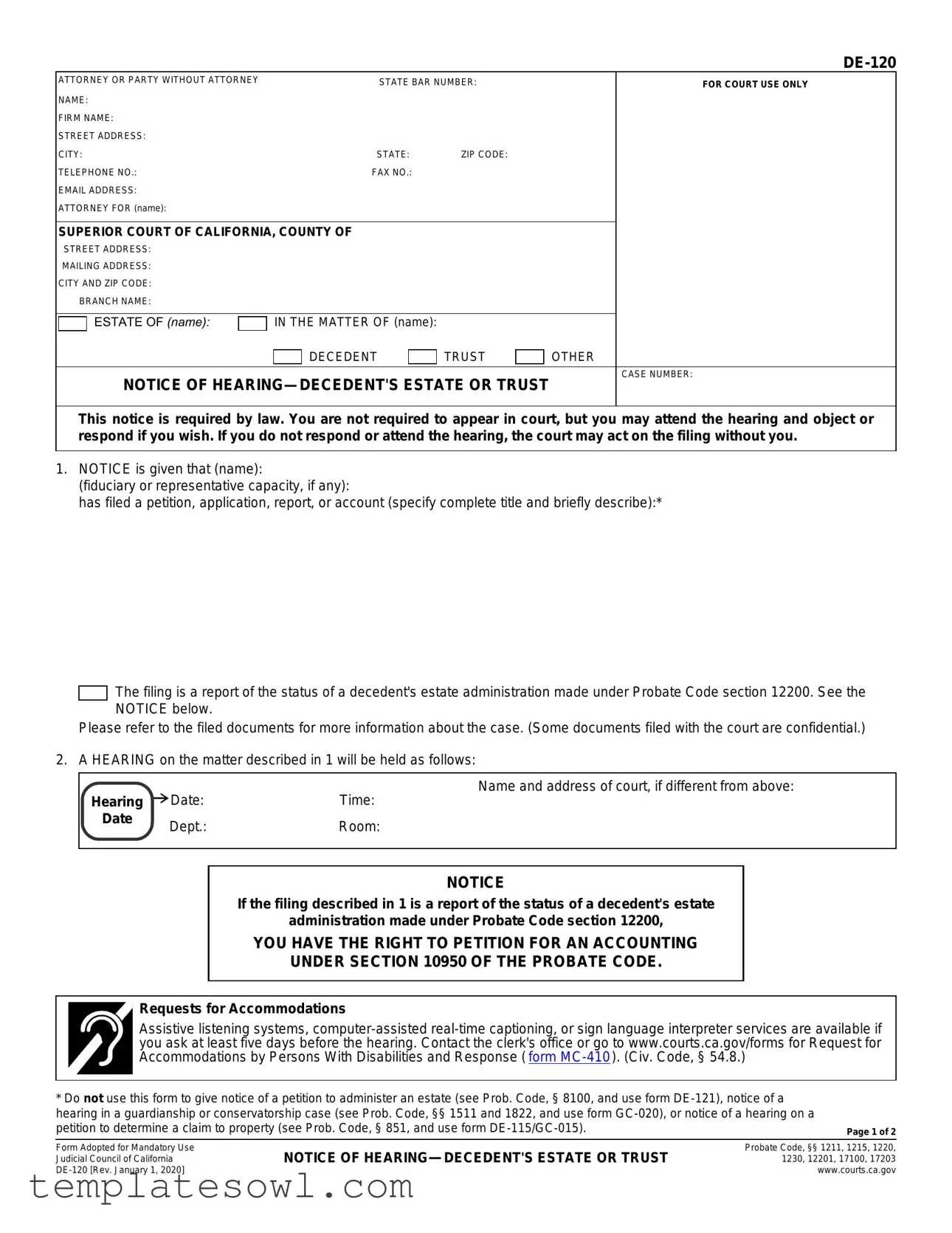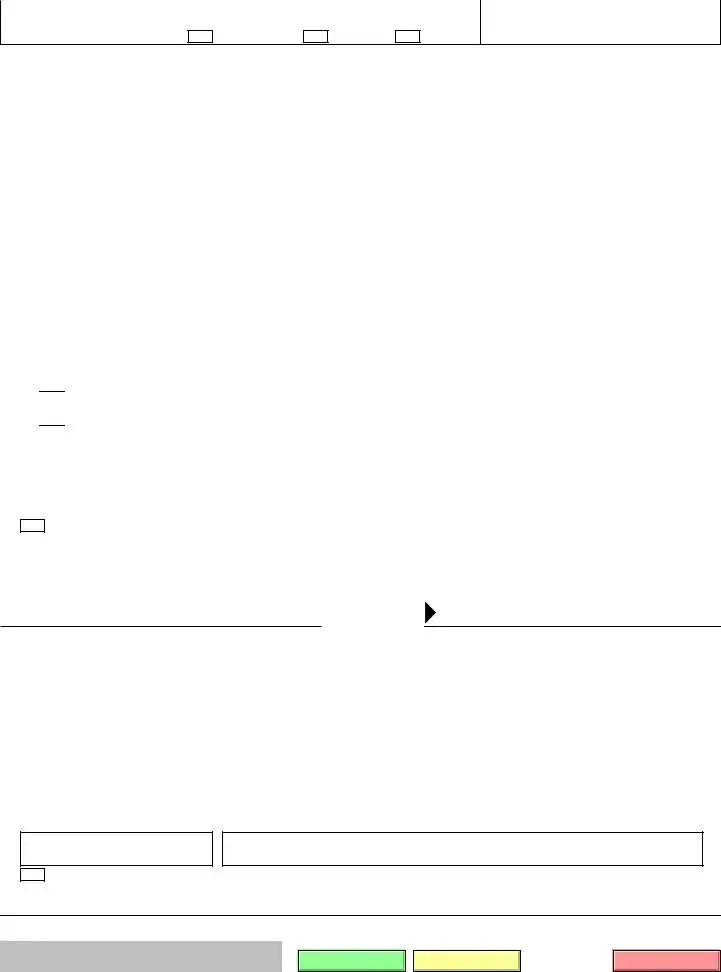Filling out the DE-120 form can be straightforward, but many people make common mistakes that can lead to confusion or delays. One significant error is failing to provide complete contact information for the attorney or party without an attorney. Omitting the telephone number or email address can hinder communication and affect the processing of the case.
Another frequent mistake is neglecting to specify the correct case number. This information is crucial, as it helps the court track the filing. Without it, your document may not be properly associated with your case. Double-checking that you have entered the right case number can save valuable time.
Inaccurate information about the decedent or the estate is also a common issue. It’s vital to ensure that the names and titles provided match the legal documents associated with the estate. Errors here can raise questions and may even result in the rejection of your form.
People often forget to indicate the appropriate hearing date and time. This detail is not just a formality; it ensures that all parties are aware of when the hearing is scheduled and can plan accordingly. Failing to fill this out can lead to significant miscommunication.
Another mistake is related to the proof of service aspect. Many forget to complete all sections relevant to proof of service by mail. The section asking for the name and address of each person notified needs to be clear and complete; otherwise, it may lead to claims that parties were not properly informed.
Some individuals make the error of not signing the form. A signature indicates that the information provided is true and correct, and leaving this blank can invalidate the submission.
Another crucial element is the certificate of posting. Omitting the details regarding where and when the notice was posted can create issues down the line. Clarity in this section helps maintain transparency with the court.
Pay attention to the choice of hearing type indicated on the form. Submitting a notice of hearing without specifying if it concerns a decedent’s estate or a trust can cause legal complications. Knowing the difference is imperative for ensuring the correct legal procedures are followed.
Filling out the form for the wrong process is also a mistake that can lead to major headaches. For example, using the DE-120 for guardianship matters instead of a proper form only tailored for decedent’s estates can derail the filing process entirely.
Lastly, individuals sometimes fail to keep a copy of the completed form for their records after submission. It's crucial to keep proof of what was submitted, just in case there are follow-up questions or disputes. Retaining a copy ensures you have a reference point for future proceedings.




